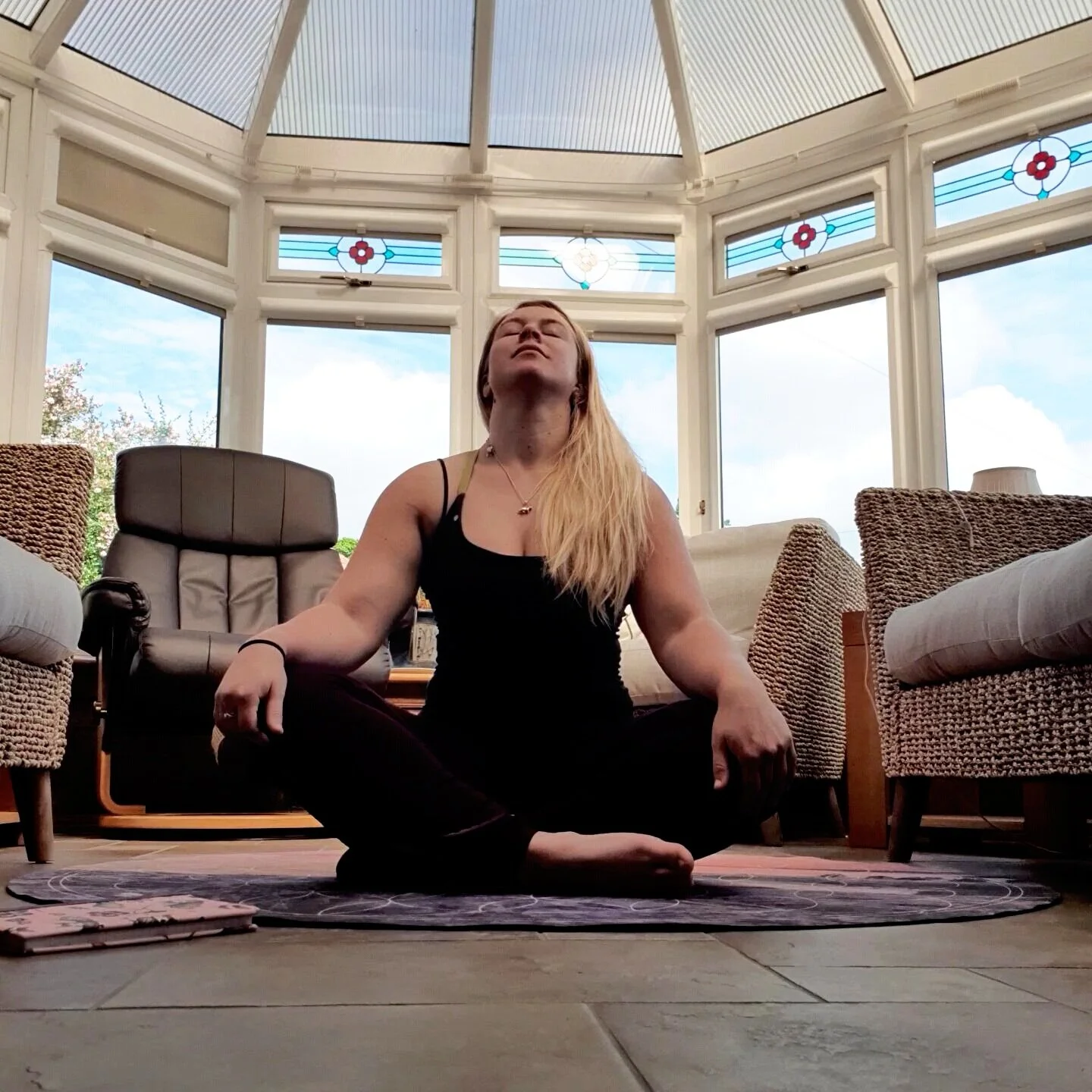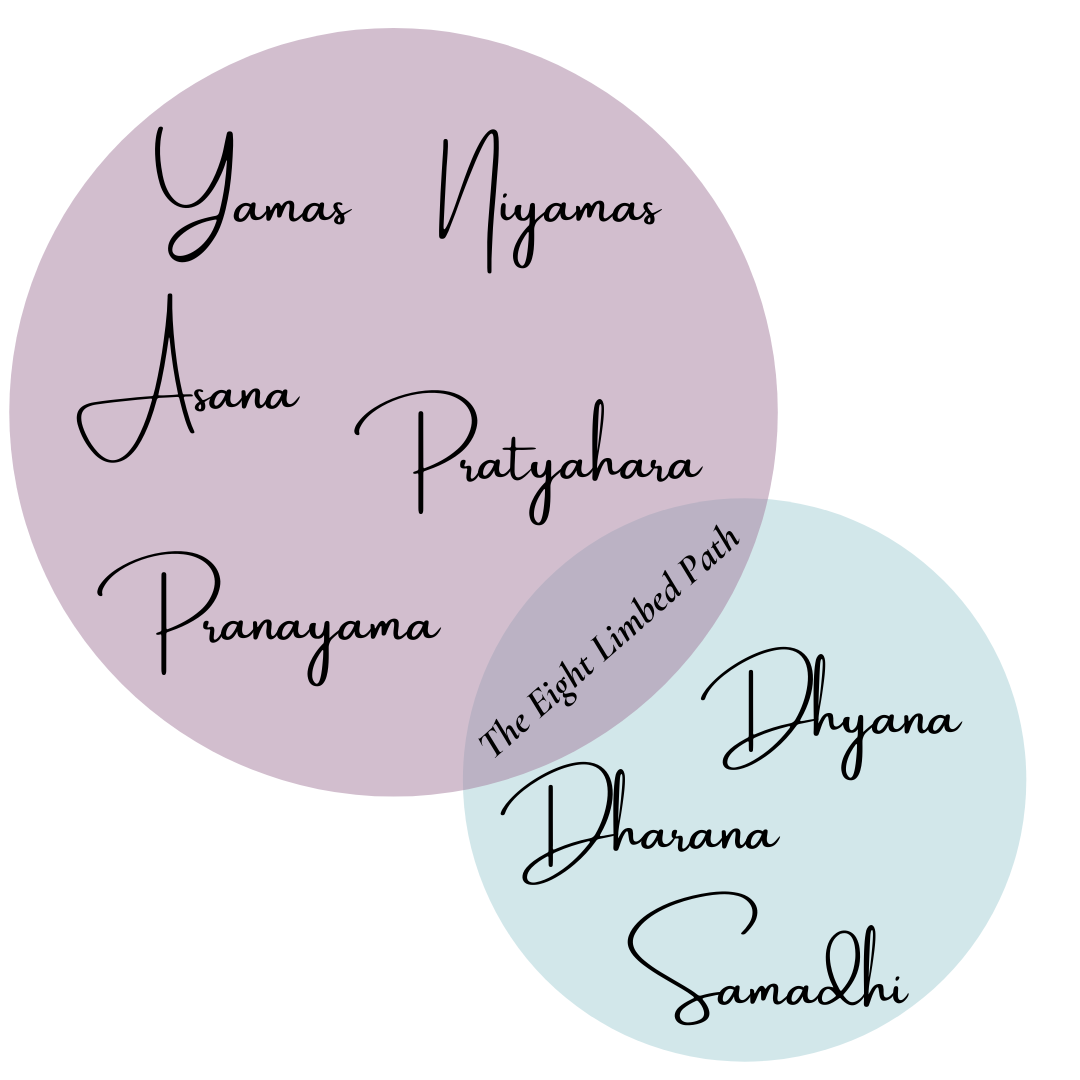Why So Many Yoga Classes Miss The Point
How on earth do some yoga poses and breathing exercises make yogi’s so damn chilled and zen?
We’ve all encountered those yoga instructors who seem to melt stress away, never get flustered, and have a voice that sounds as though it has never been raised. That level of zen is pretty appealing, so we start doing yoga in the hopes that we too, will bend our way into yogic bliss.
… but yoga is so much more than just those poses.
There are a few different types of yoga, one of the most popular being Ashtanga yoga. Ashtanga translates to ‘eight limb’ (ashta = eight, and anga = limb), referring to the eight limbed path of yoga. These are the eight practices that make up a whole and balanced yoga practice.
Only one of those limbs refers directly to the poses we all associate with yoga!
But what are these limbs…? If it’s not the poses, what is it that will bring us to the zen-yogi life?
The Eight Limbs of Yoga
OK, let’s have an overview of the eight limbs before we look at how to practice towards that chilled outlook…
Yamas - Living ethically and in line with your morals.
Niyamas - Practicing self-discipline and expanding your worldview. Growing your relationship with yourself.
Asana - The physical postures of yoga and outlook of “finding the teacher in all things”.
Pranayama - Breath work and control.
Pratyahara - Sense withdrawal, e.g. closing your eyes to meditate, or focusing on one point (or drishti).
Dharana - Concentration, the ability to maintain your focus on your current objectives and intentions.
Dhyana - Meditation, or in some cases flow states.
Samadhi - Absorption into your current state, a state of ecstasy where all things are one.
So that’s a lot… that’s more than 1hr of downward dog. It makes sense that yogis are so zen when they focus on all of those different things!
So how can we bring those practices into our week? Well, it’s easier than you’d think.
First of all we need to split these into two groups - the ones that can be taught, and the ones that need to be caught.
The first five of the eight limbs are those we can learn, the final three are ones we have to experience for ourselves - which comes from practising the first five!
The Taught Limbs
I’m going to dive straight into the practicalities of learning and practicing each of the ‘taught’ limbs - it is simpler than you might expect!
Yamas
Living ethically and in line with your morals.
Yamas is also sometimes known as abstinence, and often associated with minimalist lifestyles and steering clear of ‘indulgences’. Now I love cake as much as the next person, so I’m not going to get preachy, but here are 3 simple ways to practice Yamas…
Declutter - yep, that simple. Marie Kondo the clutter and see how your environment feels.
Prioritise - Got too much on? Work out what really matters (I’d highly recommend reading Essentialism if you’d like some help with this one).
Listen to your gut! If your gut says something isn’t right, listen to it. Save yourself the discomfort of that internal conflict!
Niyamas
Practicing self-discipline and expanding your worldview. Growing your relationship with yourself.
Niyama is also known as ‘observance’, which we can apply to caring for and observing ourselves. To me, this is the most indulgent self-care out there! So how can we practice Niyamas?
Take a mindful shower - Again, super simple! Taking the time to care for your body is part of practicing Niyamas.. and who doesn’t feel better after a shower?
Be aware of your reactions - Yep, this is yoga. Understanding how and why we react (especially if the reaction isn’t helpful) and working towards a more ‘helpful’ stance is always gonna feel better than losing our minds (The Obstacle is the Way is my book recommendation for this one!).
Try again tomorrow. If today doesn’t work, just come back and try again tomorrow.
Asana
The physical postures of yoga and outlook of “finding the teacher in all things”.
This is what most yoga classes focus on. This brings us all of those lovely poses and sequences that make yoga such a popular practice to restore our body… but I think it’s even more valuable as a playground for working on our minds!
Here are three ways to practice Asanas…
Go to a yoga class!
Notice your self-talk - How do you speak to yourself when things get hard? Adapting this can change our feelings, behaviour, and results.
Look for the lessons - OK, so you didn’t get that job but you did get some extra interview practice! Where appropriate, look for the lessons in your experiences.
Pranayama
Breath work and control.
Yoga classes include elements of breathwork, but you can do this yourself wherever you are. This one is super portable!
Go to a yoga class - This bit is great in yoga classes!
Observe your breathing - Are you holding tension anywhere? Can you breathe into it and release it?
Take a deep breath before you respond - Not only is this good for managing our emotions but also gives us space to put our best response forward. Perfect!
Pratyahara
Sense withdrawal, e.g. closing your eyes to meditate, or focusing on one point (or drishti).
The purpose of meditation isn’t to sit and not have a single thought, but instead to improve our focus and ability to control the direction of our thoughts. This is one of my favourite aspects of yoga, and regular meditation can even increase the grey matter in your brain (whaaaat!?).
Download a meditation app - Headspace and Calm are both great for guided meditations.
Go a day without your phone - Our phones are the ultimate distraction devices, one day without can feel like a holiday from endless notifications.
Do one thing - Focusing on the one thing at hand (right now I’m doing that with this blog) is a great way of strengthening those focus muscles too!
Those practices are pretty all-encompassing, right!
The zen-yogi life isn’t just about being bendy physically, and this is what soooo many yoga classes miss out (or gloss over). By practising the ‘taught’ limbs, you can start to experience Dharana (concentration and ability to maintain your focus), Dhyana (meditation or flow states), and Samadhi (absorption into your current state in a super blissful way).
Once you catch all of those amazing feelings it’s no wonder life gets a whole load more zen!
So… what is the point?
The point is, I guess, that movement is about so much more than physical fitness. At some point many of us will experience that “ugh, I should go to the gym”, and the pressure that comes from doing exercise we don’t love and that doesn’t light up our mind.
For thousands of years mental and physical fitness have come as a package, with yogis and Stoics mentioning the benefits of a still mind and healthy body.
Yoga for physical fitness is great, but without teaching the awesome mindset-focused principles you’re missing out on soooo much happiness.
So the next time you go to exercise, remember it is for you. It is the perfect playground for playing with your boundaries, your focus, and your determination.
The point is fitness and mindset go hand in hand, and they always have.
If you’ve enjoyed this blog, I can send you an email when the next one comes out! Just pop your details in the form below 👇







